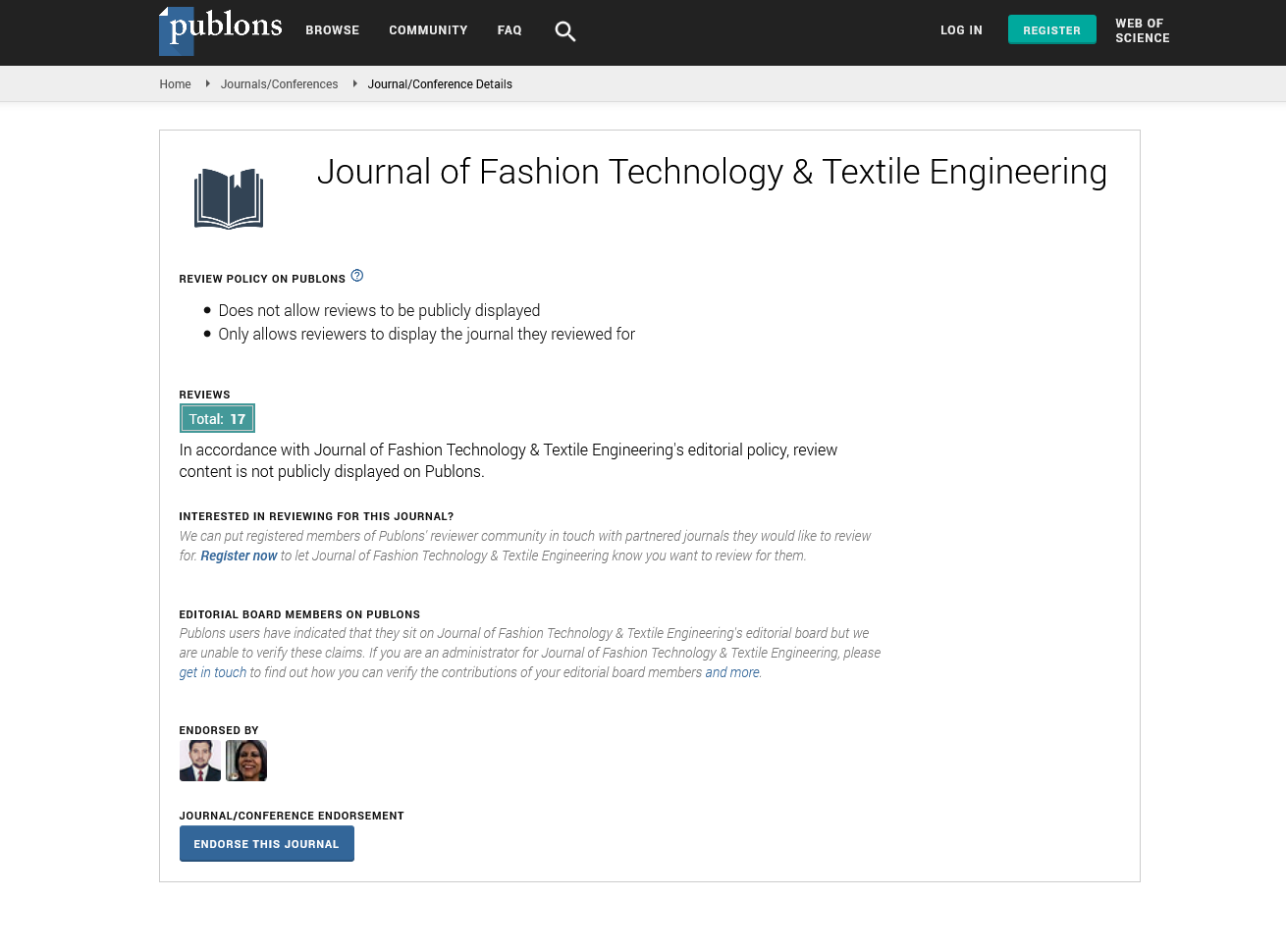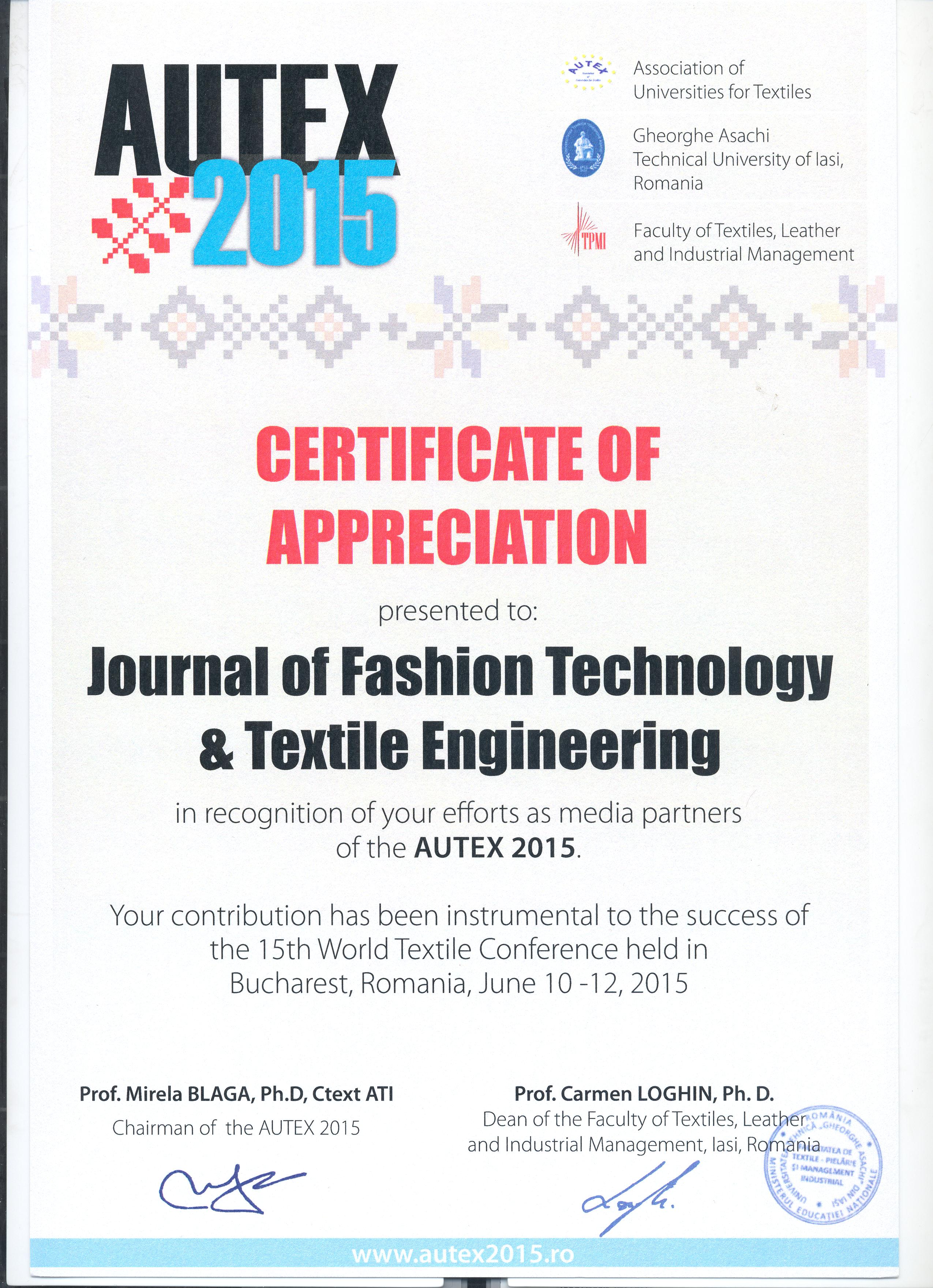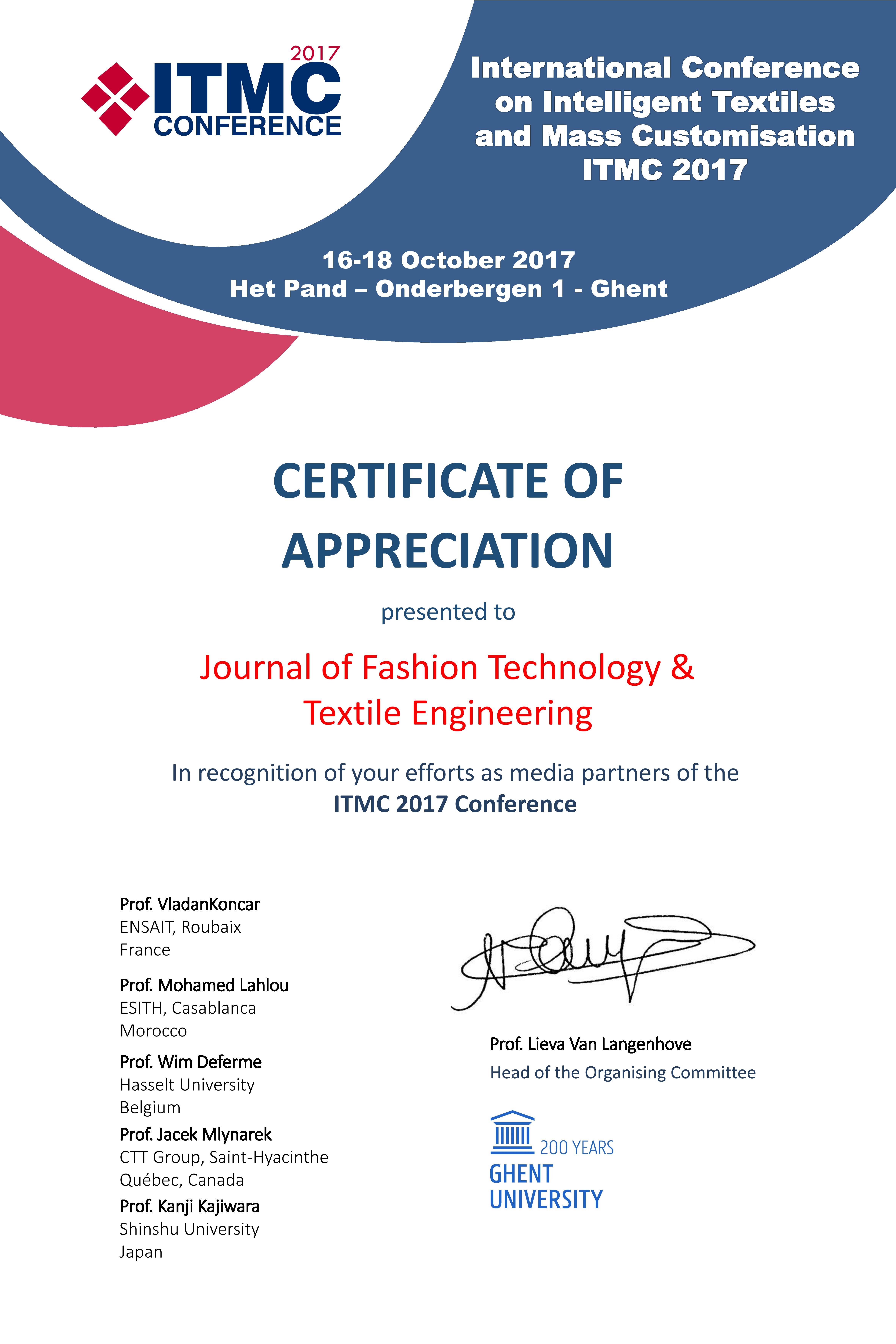Perspective, J Fashion Technol Textile Vol: 12 Issue: 6
Advancements in Eco-Friendly Fashion Technology a Sustainable Method Industry
Duina Hein*
1Department of Fashion and Textile Design, University of Otago, Dunedin, New Zealand
*Corresponding Author: Duina Hein,
Department of Fashion and Textile Design,
University of Otago, Dunedin, New Zealand
E-mail: duina_hein23@gmail.com
Received date: 26 November, 2024, Manuscript No. JFTTE-24-155267;
Editor assigned date: 28 November, 2024, PreQC No. JFTTE-24-155267 (PQ);
Reviewed date: 12 December, 2024, QC No. JFTTE-24-155267;
Revised date: 20 December, 2024, Manuscript No. JFTTE-24-155267 (R);
Published date: 27 December, 2024, DOI: 10.4172/2329-9568.1000389.
Citation: Hein D (2024) Advancements in Eco-Friendly Fashion Technology a Sustainable Method Industry. J Fashion Technol Textile 12:6.
Description
Eco-friendly fashion technology is transforming the way fashion industry designs, manufactures and consumes clothing. As the fashion industry arrange with its environmental impact, these technologies are emerging as vital solutions to reduce waste, conserve resources and promote sustainability. With growing awareness about the environmental costs of fast fashion, eco-friendly fashion technology is redefining how garments are produced and consumed, aligning fashion with the principles of environmental responsibility and ethical production. One of the primary ways eco-friendly fashion technology is making an impact is through the development of sustainable materials. Traditional textiles like cotton and polyester require vast amounts of water, energy and chemicals to produce, often leading to significant environmental damage. In response, eco-friendly fashion technologies are introducing new fabrics that are biodegradable, made from recycled materials, or derived from renewable sources. For example, fabrics made from organic cotton, bamboo, hemp and Tencel are becoming increasingly popular due to their minimal environmental footprint. Innovations like biofabrication are also on the rise, where materials such as mushroom leather, algae-based fabrics and labgrown fibres are being developed as alternatives to traditional animal and synthetic materials. These sustainable materials not only reduce reliance on fossil fuels but also help reduce pollution and waste associated with conventional textile production.
Another key area of eco-friendly fashion technology is in the production process itself. Traditional garment manufacturing involves substantial waste, both in terms of materials and energy consumption. Eco-friendly technologies, however, focus on reducing waste and optimizing energy efficiency in the production process. For instance, 3D knitting and digital fabric printing technologies enable manufacturers to produce garments with minimal waste, as the design and manufacturing processes can be adjusted to use only the required amount of material. These techniques allow for more precise cuts and designs, which significantly reduce fabric waste during production. Additionally, energy-efficient machinery, waterless dyeing technologies and closed-loop systems are being implemented to minimize the environmental impact of garment production.
Sustainability is also becoming a core aspect of fashion retail. Ecofriendly fashion technology is transforming the way brands engage with consumers by providing more sustainable shopping experiences. Online platforms powered by artificial intelligence (AI) and machine learning can predict consumer preferences and suggest items based on their previous purchases, reducing overproduction and waste. Furthermore, virtual fitting rooms powered by augmented reality (AR) allow customers to try on clothes digitally, preventing the environmental impact of returns and reducing the need for physical samples. These technologies also facilitate better supply chain management, as fashion brands can track the movement of raw materials and finished products in real-time, ensuring that resources are used efficiently and ethically.
Another significant advancement in eco-friendly fashion technology lies in the concept of circular fashion, which encourages the reuse, repair and recycling of garments. Fashion technologies like garment recycling machines and chemical recycling processes are being developed to break down old textiles into their raw materials, which can then be repurposed into new garments. This not only reduces waste but also conserves valuable resources, as textiles made from recycled fibers require less energy and water to produce compared to virgin materials. Additionally, digital platforms and apps that facilitate clothing exchanges, repairs and resale are contributing to a shift towards a more circular economy in fashion.
Conclusion
In conclusion, eco-friendly fashion technology is playing a essential role in transforming the fashion industry into a more sustainable and responsible sector. By innovating new materials, optimizing production processes and embracing circular fashion, these technologies are helping to reduce the environmental impact of the fashion industry. While challenges remain, the continued development and adoption of eco-friendly fashion technologies will be vital in ensuring that the fashion industry can handle the needs of consumers without compromising the health of the planet. As technology and sustainability continue to advance, the future of fashion looks increasingly aligned with environmental ethical practices.
 Spanish
Spanish  Chinese
Chinese  Russian
Russian  German
German  French
French  Japanese
Japanese  Portuguese
Portuguese  Hindi
Hindi 


